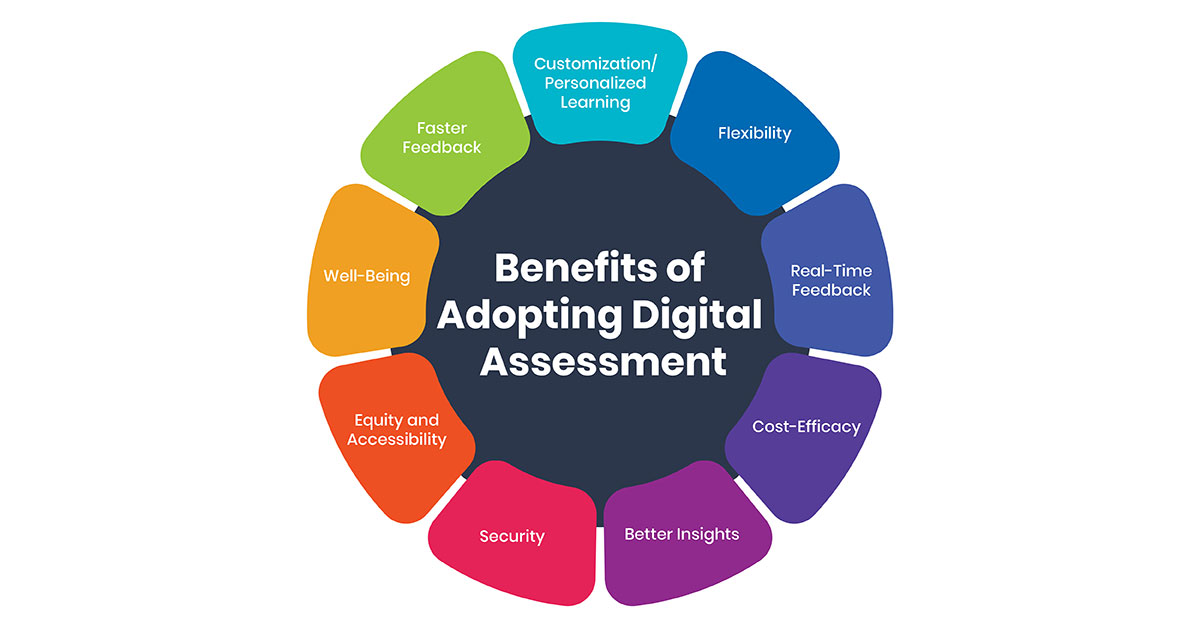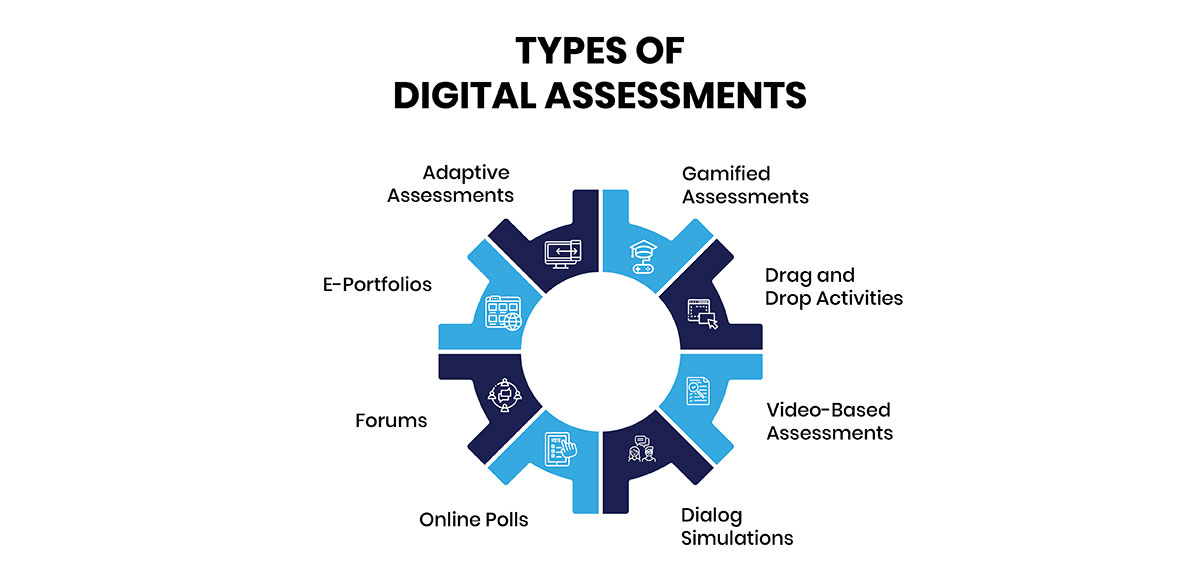The educational landscape is rapidly evolving as digital technologies transform traditional learning and assessment methods. Digital assessments are at the forefront of this change, offering a more efficient, accurate, and comprehensive way to evaluate student performance. Unlike conventional assessments, digital tools provide real-time feedback, eliminate bias, and allow for personalized learning experiences that better align with students' needs. Beyond improving efficiency, digital assessments are redefining the purpose of evaluations.
As the digital wave continues to influence all aspects of life, the adoption of digital assessments marks a significant step towards modernizing education. It encourages educational institutions to rethink their approach to evaluations, moving from mere knowledge recall to a more comprehensive assessment of a student's skills and readiness for the future. This transformation is essential in ensuring that education remains relevant in an increasingly digital world.
The Role of Digital Assessment in Today’s Education
In the fast-changing environment of education today, digital assessments play a pivotal role in aligning teaching strategies with the needs of modern learners. As education becomes increasingly digitized, the methods used to evaluate student performance must also adapt. Digital assessments have emerged as essential tools in this transformation, offering a more flexible and comprehensive approach to measuring learning outcomes.
The shift towards digital assessments is driven by the need for timely and accurate feedback in a technology-enhanced learning environment. Traditional methods, often limited by logistical constraints, struggle to keep pace with the dynamic needs of students and educators. Digital assessments, however, can be seamlessly integrated into hybrid or fully online learning environments, providing real-time insights into student progress. According to the US EdTech Report, classroom response and assessment tools were the most adopted educator-focused product category, highlighting their growing significance.
Moreover, digital assessments are not just tools for evaluation; they also play a critical role in shaping the learning experience itself. By enabling a more nuanced understanding of student needs through diagnostic, formative, and summative assessments, educators can tailor their instruction to better support individual learning paths. This adaptability is particularly important in today’s education system, where students’ learning environments are as diverse as their educational needs. As the educational paradigm continues to evolve, digital assessments will remain integral to ensuring that education is both effective and inclusive.
Benefits of Adopting Digital Assessment
The evolution of technology in education is driving a transformation in assessment practices, with digital tools offering more precise, adaptable, and inclusive ways to measure student progress. So, let’s explore few advantages of digital assessment:

-
Customization/ Personalized Learning
Digital assessment systems leverage AI and machine learning to refine evaluations based on student performance, learning speed, and special needs. This customization allows for the creation of unique assessments that cater to diverse skills and knowledge levels, ensuring a more personalized approach to learning. -
Flexibility
By migrating assessments to digital platforms, educators and students benefit from the flexibility to conduct and complete tests anytime and anywhere. This flexibility reduces performance pressure and enables students to focus on acquiring and retaining knowledge at their own pace. -
Real-Time Feedback
Advanced technologies in digital assessments facilitate the automation of evaluations, providing immediate feedback. Continuous assessments enable timely intervention with additional resources and reinforcement materials, helping students achieve better learning outcomes and allowing fast learners to explore extra content. -
Cost-Efficacy
Digital assessments reduce administrative burdens by automating tasks such as attendance tracking, grading, and feedback delivery. This automation saves time and resources, allowing educators to focus on more impactful activities and reducing the need for physical materials and storage. -
Better Insights
Digital assessments provide valuable data on student performance and learning progress. This data helps educators refine teaching strategies and content, enhancing the overall educational experience. Continuous evaluations embedded in the learning process offer deeper clarity into both student capabilities and instructional effectiveness. -
Security
Digital assessments are more secure than traditional paper-based methods, with robust encryption and remote proctoring ensuring the integrity of the evaluation process. These security measures help prevent breaches and maintain the confidentiality and accuracy of assessments. -
Equity and Accessibility
Digital assessments promote fairness by anonymizing student details and breaking down geographical and social barriers. They also support special needs students through accessibility features, ensuring a level playing field for all learners. -
Well-Being
The flexibility of digital assessments reduces exam-related stress by allowing students to take tests in comfortable environments and at times that suit them best. This approach helps improve overall student well-being and reduces anxiety associated with traditional exam settings. -
Faster Feedback
Automated scoring systems in digital assessments provide instant feedback, allowing students to quickly understand their performance and make necessary adjustments. Detailed teacher feedback is also expedited, facilitating faster and more effective learning.
Types of Digital Assessments
As technology advances, the landscape of assessments in education is evolving to become more interactive and engaging. Here’s an overview of different types of digital assessments that cater to diverse learning styles and levels:

-
Gamified Assessments
Gamified assessments incorporate elements of gaming into the evaluation process, making learning more enjoyable and less stressful, particularly for younger students. By integrating features such as leaderboards, badges, and achievement levels, these assessments foster a sense of accomplishment and motivate students through friendly competition. -
Drag and Drop Activities
Drag and drop activities are designed to enhance fine motor skills and provide an alternative approach to traditional choice-based questions. These interactive tasks allow students to receive immediate feedback on their answers, boosting their confidence and providing opportunities for improvement in real-time. -
Video-Based Assessments
Video-based assessments offer students the chance to respond to descriptive questions through recorded or live video. This format not only supports inclusive learning by accommodating different communication styles but also helps students refine their verbal expression and prepare for real-world scenarios like interviews. -
Dialog Simulations
Dialog simulations involve interactive, conversation-like assessments where students respond to questions in a dynamic format. These can be written or verbal, providing a personalized assessment experience that aligns with individual learning goals. The dialog-based approach allows for adaptive questioning and more profound understanding of students' comprehension. -
Online Polls
Online polls are a contemporary addition to assessment methods, used to quickly gauge student comprehension during live sessions. They offer a snapshot of how well students are grasping the material and can highlight areas where communication between teachers and students might need improvement. -
Forums
Digital forums facilitate online discussions and debates, allowing students to articulate their views, respond to peers, and engage in collaborative learning. By setting clear guidelines, educators can use forums to effectively monitor student interactions and assess their understanding of various topics. -
E-Portfolios
E-portfolios are digital collections of a student’s work, showcasing their learning progress and achievements over time. They often include a range of content, such as essays, projects, presentations, and reflective writing. E-portfolios are valuable for assessing both the process and the final product of learning, offering insights into a student's development and competencies. -
Adaptive Assessments
Adaptive assessments use algorithms to adjust the difficulty of questions based on a student's responses. This type of assessment modifies the testing experience, ensuring that each student is challenged at an appropriate level. Adaptive assessments provide a more accurate measure of a student’s abilities and learning needs.
The Future of Education with Digital Assessment
The future of education is being reshaped by digital assessment, revolutionizing both the learning experience and evaluation methods in higher education. As universities adopt digital assessments, there is an increasing focus on developing authentic evaluation methods that not only replace standardized tests but also accurately reflect the skills students will need in their professional careers. This evolution is driving a more profound digital transformation, where institutions move beyond initial logistical challenges to fundamentally change how student abilities are assessed, ensuring these evaluations align with real-world expectations.
A key benefit of digital assessment is the valuable data and insights it provides for both educators and students. These insights help identify progress, gaps, and areas for improvement, facilitating collaboration between students and teachers to achieve optimal learning outcomes. While traditional in-person exams may still occur, they are unlikely to remain the primary method of evaluation.
To remain competitive, educational institutions must embrace digital learning solutions and platforms, improving the quality and flexibility of assessments while promoting fair, unbiased, and sustainable educational practices. As digital assessments continue to advance, they will play a pivotal role in keeping education relevant and effective in preparing students for the complexities of the modern workforce.
Conclusion
The integration of digital assessment into education marks a significant step forward in modernizing how learning is evaluated and understood. This transformation is not just about replacing traditional exams but reimagining the entire process of student evaluation to better reflect the skills and knowledge necessary for success in today’s world. As educational institutions continue to embrace these technologies, the focus will shift toward creating more inclusive, adaptable, and insightful assessments that truly support personalized learning.
By doing so, education will evolve into a more dynamic, fair, and effective system, better equipped to prepare students for the challenges and opportunities of the future.
Latest
Trends blogs
- Education and Industry Alignment: Rethinking Skill-Based Curriculum
- Education Policy Reform Amid Global Challenges and Shifting Standards
- Certification and Credentials: The New Fuel for Career Growth
- Technology in Outcome-Based Education: Driving Change in Higher Education





